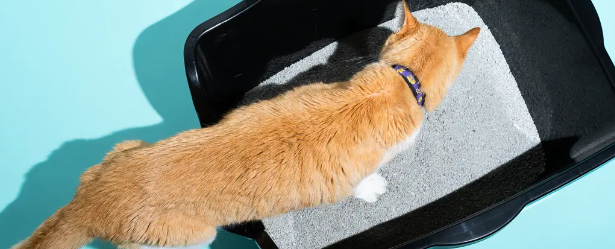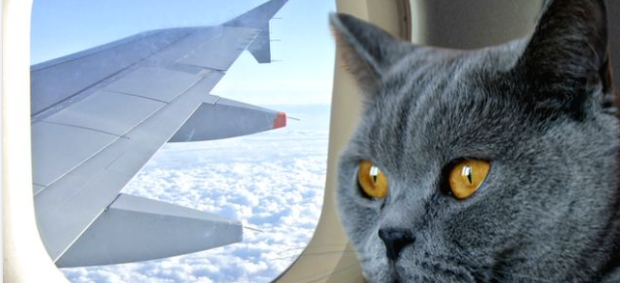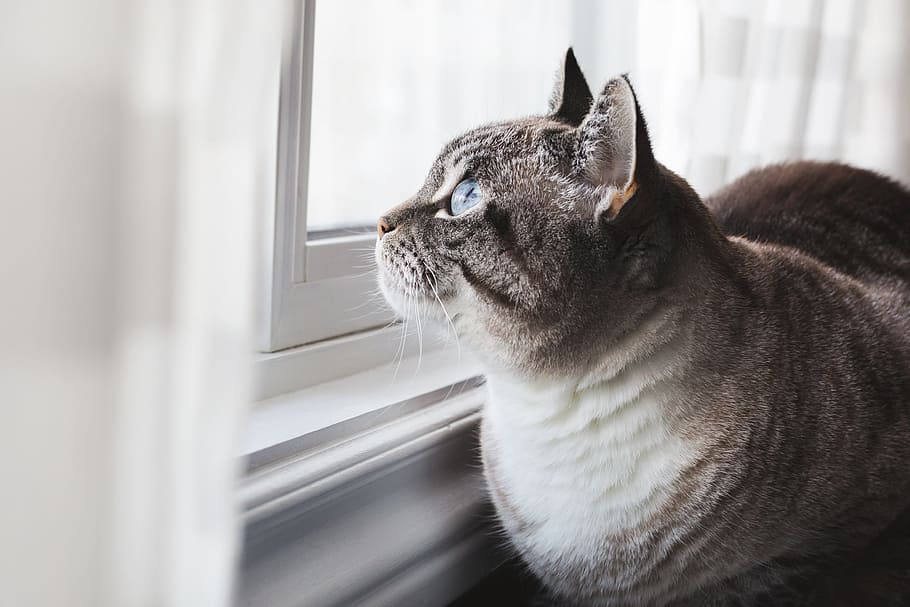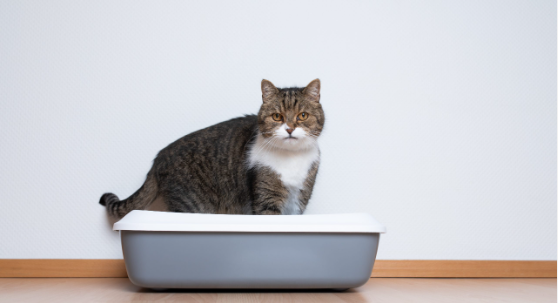How Long Can a Cat Travel Without Peeing?
The Importance of Understanding a Cat’s Urinary Habits
Cats are fascinating creatures that are beloved by many as pets. They are independent, and intelligent, and have unique personalities that make them great companions.
However, when it comes to traveling with cats, their urinary habits can sometimes be a cause for concern. Understanding how long a cat can go without peeing is an essential aspect of feline care that all cat owners should know.
Cats have specific urinary habits that differ from other animals, including humans. This article will explore the topic of how long a cat can travel without peeing, the importance of understanding their urinary habits, and what factors affect their ability to hold urine.
Explanation of the Topic
Cats are known for their fastidious behaviour and spend significant amounts of time grooming themselves. However, they also have unique urinary habits that require attention from their owners.
Unlike dogs or humans who may urinate frequently throughout the day, cats tend to hold on to urine until they find an appropriate place to relieve themselves. When travelling with cats or during times when the litter box is inaccessible or unavailable, understanding how long your feline friend can go without peeing is crucial.
Holding urine for an extended period can lead to health problems such as bladder infections and even kidney damage in extreme cases. As responsible pet owners, it’s essential to know the signs indicating when our cats need to use the litter box and provide them with timely access.
Failing to do so could lead to stress and discomfort for our feline friends and create unnecessary complications down the road. This article aims to shed some light on this important topic by providing you with valuable insights into your feline friend’s urinary system while explaining why it’s essential always to be aware of their needs — whether at home or on the road.
Basic Anatomy And Physiology Of Cats
Cats have unique anatomy when it comes to their urinary system. They have two kidneys, which filter waste from their blood and create urine that is then sent down the ureters to the bladder.
The bladder is a muscular sac that stores urine until it is released through the urethra during urination. Cats also have a special gland called the periurethral gland, which lines the urethra and secretes pheromones to mark territory.
Overview of the feline urinary system
The feline urinary system is different from humans in several ways. One major difference is that cats have a much shorter urethra than humans, making them more susceptible to blockages or obstructions.
Additionally, cats are obligate carnivores, meaning they require high amounts of protein in their diet but do not produce enough enzymes to break down large amounts of plant material. This can lead to concentrated urine and an increased risk of urinary issues such as crystals or stones.
Comparison to the human urinary system
In comparison, humans have longer and wider urethras than cats, making blockages less common. Humans also produce more dilute urine due to our omnivorous diets and larger kidneys. However, similar to cats, humans also have two kidneys that filter waste from our blood and store urine in our bladder until it is released through the urethra during urination.
Factors that affect a cat’s ability to hold urine
Several factors can impact how long a cat can hold its urine before needing to urinate again. These include age (older cats may experience weakened bladder muscles), hydration levels (dehydration can lead to concentrated urine), diet (high protein diets can lead to more frequent urination), medical conditions (such as kidney disease or diabetes), stress levels (anxiety or changes in routine can affect litter box habits), and the size of the bladder itself. Understanding these factors can help cat owners better manage their pet’s urinary needs, especially when travelling or during unusual circumstances.
The Feline Urinary System: Understanding Your Cat’s Urinary Habits
Cats are known for their independent nature, but when it comes to their urinary habits, it’s important for cat owners to be aware of how often their cats should be urinating. On average, a healthy adult cat can go between 24-48 hours without urinating. However, there are several factors that can impact this timeframe.
The average time between urinations for healthy cats varies depending on the age of the cat and its overall health. Kittens and younger cats typically need to urinate more frequently than adults due to their smaller bladders.
Adult cats typically urinate anywhere from 2-4 times per day. Senior cats may also require more frequent trips to the litter box due to age-related changes in bladder function.
Factors such as hydration levels, diet, and activity level can also impact how long a cat can go without urinating. Cats who consume more water or wet food will need to urinate more frequently than those who primarily eat dry food or have limited water intake.
Active cats who play and exercise regularly may need to use the litter box more often because physical activity can stimulate the bladder. While it’s normal for cats to hold their urine for longer periods of time occasionally, there are risks associated with holding urine too long on a regular basis.
A cat’s urinary system is designed to eliminate toxins and waste products from the body through regular urine production and excretion. When a cat holds its urine for extended periods of time, this waste buildup can lead to bacterial infections in the bladder or urinary tract, which can cause pain and discomfort during urination and require medical treatment.
Tips for managing a cat’s urinary needs during travel
As a responsible cat owner, it is important to manage your cat’s urinary needs while travelling. Here are some tips to make sure your feline friend stays comfortable and healthy during the journey:
Preparing for travel with a litter box and other supplies
Pack a portable litter box, fresh litter, and plenty of waste bags. Choose a carrier that is large enough for your cat to stand up, turn around, and stretch out comfortably.
Line the carrier with a soft blanket or towel. If you plan on traveling by car, stop frequently to give your cat opportunities to use the litter box.
Understanding your cat’s preferences and behaviours
Some cats are particular about the type of litter they use or may prefer an uncovered litter box. Pay attention to what works best for your cat at home and try to replicate those conditions as much as possible while travelling. Additionally, some cats may be more anxious or stressed when travelling which can lead to reluctance in using the litter box.
Strategies for encouraging your cat to use the litter box while travelling
When stopping at rest areas or hotels, make sure that you offer water frequently so that there is enough urine production which will trigger urination reflexes in cats. If you have tried everything but still cannot get them into their litter tray then consider using pheromone sprays like Feliway which can have relaxing effects on cats. Overall, keeping an eye on their body language should give owners clues about when their feline friend needs access to its tray — meowing or pacing could be signs of distress so pay close attention as such behaviours could mean they need time spent outside of their carrier in order to relieve themselves.
Unusual Circumstances that Affect Urinary Habits
Cats may have difficulties holding their urine due to a variety of unusual circumstances. For instance, if the cat is on medication for other medical conditions, urinary problems could arise as a side effect. Likewise, an overweight cat may have difficulty accessing the litter box and thus avoid urinating for extended periods.
Other possible causes include arthritis or the presence of bladder stones which can cause pain and discomfort while urinating. Moreover, environmental factors such as stress or anxiety can also affect a cat’s urinary behaviour.
Cats are sensitive creatures and changes in their environment can lead to anxiety and ultimately cause problems with urination. A change in routine such as moving house or introducing new pets into the household, can cause distress leading to irregularities in urinary habits.
Medical Conditions that Affect Urinary Habits
Various medical conditions can affect a cat’s ability to hold urine including feline lower urinary tract disease (FLUTD), cystitis, bladder infection, or diabetes among others. These conditions usually come with symptoms such as frequent urination or urination outside of the litter box.
A common condition among cats is FLUTD which refers to any condition affecting the lower urinary tract including inflammation of the bladder or urethra which could result from crystals being present in urine or infection. The condition causes painful and frequent urination which could result in your feline avoiding its litter box altogether.
Behavioral Issues Related to Litter Box Use
Litter box aversion is one behavioural problem that could lead to cats avoiding using their litter boxes. This may occur if your pet finds that its existing litter box is too small or uncomfortable leading them to look elsewhere for relief.
Similarly, an uncleaned litter box may discourage your pet from using it altogether leading them to hold urine until they find somewhere else to go. Another issue that could cause litter box aversion is the location of the litter box.
The box should be located in a quiet, private place where your pet can relieve itself without disturbances. Some cats may simply prefer certain types of litter with others being too harsh on their paws or unpleasant scents putting them off.
Conclusion
Understanding how long a cat can travel without peeing is important when planning a trip with your cat. Factors such as unusual circumstances affecting the cat’s ability to hold urine and medical conditions could cause urinary problems while travelling. Environmental factors such as stress or anxiety, and behavioural issues related to litter box use are other possible causes of urinary irregularities in cats.
To prevent these issues from occurring while travelling, it is important to understand your cat’s preferences and behaviours regarding urinary habits before embarking on trips. Additionally, ensuring that you have all necessary supplies including clean litter boxes for each day of travel will go a long way in keeping your feline healthy and comfortable throughout the journey.





Leave a Reply